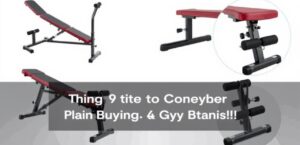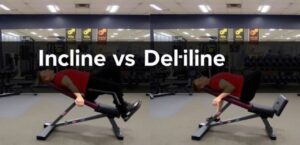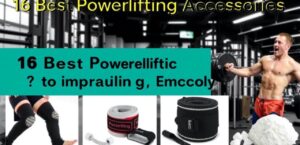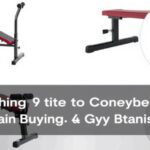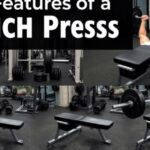Crafting a resume isn’t just about listing your job history—it’s your first impression, your elevator pitch, your personal highlight reel. In today’s fast-paced, competitive job market, even small tweaks can make a huge difference. Whether you’re stepping into the workforce for the first time or revamping your resume after years in the game, knowing how to stand out is key. The good news? You don’t need a complete overhaul—you just need the right hacks. From power words to layout secrets, this list of 16 resume-building hacks is designed to help you shine, get noticed, and land interviews. Let’s turn that resume into a career-launching machine.
Hack 1: Craft a Compelling Summary
- Open with a punchy career snapshot, not a vague objective.
- Use dynamic action verbs to kickstart your story.
- Highlight years of experience in a bold but humble way.
- Mention your industry expertise in the first line.
- Include one standout achievement right up top.
- Add personality—just a sprinkle to stay memorable.
- Tailor the summary to each specific job.
- Show confidence without sounding arrogant.
- Emphasize soft skills with strong adjectives.
- Avoid clichés like “hardworking” or “go-getter.”
- Use metrics or impact-driven phrases if possible.
- Be concise—3 to 4 sentences max.
- Align your summary with the job description tone.
- Skip overused buzzwords unless they add real value.
- Mention your career goal only if it’s specific and relevant.
- Use plain language that feels human, not robotic.
- Avoid passive voice—stay direct and strong.
- Hook the reader with something unique about you.
- Keep it optimistic and forward-looking.
- Read it aloud to test its clarity and flow.
Hack 2: Make Your Formatting Foolproof
- Stick to clean, professional fonts like Calibri or Helvetica.
- Use a readable font size—11pt to 12pt is ideal.
- Keep margin spacing balanced and breathable.
- Use bullet points, not paragraphs, for experience.
- Align content left to improve readability.
- Keep section headings bold and simple.
- Avoid excessive bold, italic, or underline combos.
- Use white space generously—it helps guide the eye.
- Save your resume as a PDF to preserve formatting.
- Don’t add images or icons unless you’re in a creative field.
- Limit color usage to one or two neutral tones.
- Choose consistency in alignment and indentation.
- Use 1-page resumes unless you’re a seasoned pro.
- Label your file professionally: FirstName_LastName_Resume.
- Stick to reverse chronological order.
- Test your resume layout on different devices.
- Use subtle lines or dividers sparingly if at all.
- Avoid headers/footers that ATS might miss.
- Stick to standard section titles for clarity.
- Always preview before submitting.
Hack 3: Use Power Words That Pop
- Replaced “responsible for” with “spearheaded.”
- Turn “helped” into “collaborated on” or “supported.”
- “Improved,” “streamlined,” or “accelerated” beats “worked on.”
- Use “achieved” when describing big wins.
- Swap “made” with “developed” or “created.”
- Use “orchestrated” for team projects.
- Choose “executed” for tasks you led.
- Say “initiated” instead of “started.”
- “Maximized” and “optimized” show efficiency.
- “Analyzed” signals strategic thinking.
- “Directed” proves leadership.
- “Negotiated” works for budget or client roles.
- “Resolved” implies problem-solving.
- Use “launched” for new initiatives.
- “Designed” is perfect for visual or structural work.
- “Engineered” sounds bold and technical.
- “Mentored” adds warmth and leadership.
- “Secured” is great for funding or contracts.
- “Reduced” shows cost-cutting skills.
- “Championed” adds a confident, driven tone.
Hack 4: Showcase Achievements, Not Just Duties
- Add metrics: “Increased sales by 32% in Q3.”
- Quantify your value whenever possible.
- Include awards or internal recognition.
- Mention process improvements you led.
- Highlight team wins you helped achieve.
- Detail customer impact or satisfaction growth.
- Share before-and-after results.
- Don’t list job duties—show what you changed.
- Turn tasks into stories of growth.
- Describe challenges you overcame.
- Add a “Key Achievements” sub-bullet.
- Include high-impact client names (if allowed).
- Reference savings in time or money.
- Include testimonials if you have space.
- Show how you adapted during crises (e.g., COVID).
- Mention promotions or role expansions.
- Show off training or onboarding others.
- List project completions and delivery dates.
- Include successful collaborations with other departments.
- Highlight how you exceeded goals, not just met them.
Hack 5: Customize for Every Application
- Match keywords from the job post.
- Mirror the language and tone of the listing.
- Emphasize most relevant experience for that role.
- Reorder bullets to fit job priorities.
- Tailor the summary for each company.
- Adjust soft skills based on culture fit.
- Update skills section per role.
- Focus on responsibilities the company values most.
- Swap less relevant achievements with stronger fits.
- Change job titles slightly for clarity (if needed).
- Remove irrelevant experiences altogether.
- Highlight tools/software the job requires.
- Customize your cover letter to match.
- Rename sections if needed (e.g., “Project Highlights”).
- Match company values subtly in phrasing.
- Add a job-specific “Career Objective” line (if used).
- Be strategic with volunteer or freelance work.
- Drop jargon they won’t recognize.
- Mention internal referrals (when applicable).
- Save a tailored version of each resume.
Hack 6: Highlight Transferable Skills
- Point out communication strengths in every field.
- Show leadership across multiple roles.
- Emphasize problem-solving in different industries.
- Link creativity to various tasks or projects.
- Demonstrate adaptability in new environments.
- Show time management with multiple examples.
- Highlight teamwork through cross-functional projects.
- Use examples of client interaction and service.
- Emphasize emotional intelligence and rapport-building.
- Include project management, even outside work.
- Show learning new tools or platforms quickly.
- Highlight tech literacy regardless of industry.
- Use soft skill language in hard skill areas.
- List training, onboarding, or mentoring others.
- Show initiative in self-taught skills.
- Include examples of decision-making.
- Highlight public speaking or presentations.
- Describe crisis management or problem handling.
- Add customer experience even from side jobs.
- Frame every skill as adaptable to the role.
Hack 7: Keep it Honest, Always
- Don’t inflate titles—own what you’ve done.
- Avoid fake job dates—integrity matters.
- If you were laid off, be honest and brief.
- Don’t create fake freelance gigs—be truthful.
- Admit employment gaps with context if needed.
- Show growth, not perfection.
- Avoid fake degrees or credentials.
- Use real references, not generic placeholders.
- Be transparent about certifications.
- Highlight efforts during career breaks (courses, etc.).
- Don’t exaggerate numbers—let them speak for themselves.
- Skip buzzwords you can’t back up.
- Remove anything you can’t explain in an interview.
- Stay professional even when tempted to embellish.
- List side hustles truthfully and proudly.
- Don’t copy others’ resumes or summaries.
- Be yourself—it’s what makes you hireable.
- Avoid pretending to know tools you don’t.
- Clarify role overlaps honestly.
- Let your work ethic show in facts, not fluff.
Hack 8: Level Up Your Skills Section
- Break into categories: Technical, Tools, Soft Skills.
- Include up-to-date software knowledge.
- Add certifications like Google Analytics or HubSpot.
- Mention programming languages if relevant.
- Highlight remote tools like Slack or Trello.
- Include any foreign languages.
- Add soft skills: “Conflict Resolution,” “Empathy.”
- Focus on what you’re best at, not everything.
- Add quick-learning tools to show adaptability.
- List recent workshops or bootcamps.
- Update it regularly—don’t let it go stale.
- Remove outdated programs (no one uses Flash anymore).
- Use skill assessments (LinkedIn, etc.) to validate.
- Include current trends in your industry.
- Add in-demand tools even if self-taught.
- Mention database/software systems you’ve mastered.
- Separate skills by relevance to job.
- Keep this section clean and bullet-based.
- Highlight any leadership or team-based skills.
- Focus on what makes you uniquely qualified.
Hack 9: Nail Your Education Details
- Include full degree titles, not abbreviations.
- Mention your GPA if above 3.5.
- Add relevant coursework or projects.
- Include graduation honors or distinctions.
- Mention scholarships or fellowships.
- List certifications and licenses here if not elsewhere.
- If no degree, list ongoing education.
- Highlight continuing education for relevance.
- Don’t list high school if you’ve graduated college.
- Include thesis or research if relevant.
- Add online credentials like Coursera or Udemy.
- Mention student leadership roles.
- Include teaching assistant experience.
- Add club or society involvement.
- Link education to your career goals.
- Don’t clutter—use bullets, not paragraphs.
- Mention any international study or exchange.
- Place this lower if you’re experienced.
- Place it higher if you’re early-career.
- Keep formatting consistent with the rest of resume.
Hack 10: Design a Modern, Professional Look
- Use resume templates (but edit heavily).
- Keep design sleek—not flashy or overdone.
- Balance colors—use sparingly.
- Align sections cleanly—use guides if needed.
- Test on both desktop and mobile.
- Avoid templates with tables—ATS unfriendly.
- Stick to two columns max.
- Use icons minimally, only if relevant.
- Stay away from WordArt or gradients.
- Highlight headers subtly with spacing or font weight.
- Ensure uniform font and spacing.
- Check for alignment irregularities.
- Use resume builders (Canva, Zety, Novoresume).
- Consider a minimalistic infographic style (for creatives).
- Save in both Word and PDF versions.
- Print once to check layout in hard copy.
- Stick to black, gray, and navy for text.
- Match tone with industry—creative vs corporate.
- Don’t sacrifice readability for flair.
- Remember: clean is professional.
You’re More Than Your Resume – But Let It Show
A powerful resume doesn’t just land interviews—it tells your story, your way. These 16 resume hacks aren’t just tricks; they’re tools to help you reveal your full potential on paper. Whether you’re making your first resume or refining your tenth, each tweak moves you closer to that dream opportunity. Remember, hiring managers aren’t just looking for qualifications—they’re looking for people. So polish up that paper version of you, send it off with confidence, and let your next big step find you. You’ve got this.

Emily Rose Johnson is a passionate writer with a knack for crafting engaging content. She specializes in communication strategies, digital marketing, and creative storytelling.


